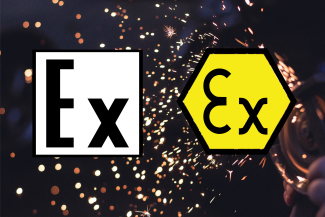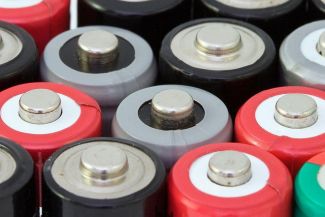
In light of the sanctions imposed against Russia and Belarus, obtaining EAC certification for products in Kyrgyzstan becomes increasingly important. It is crucial for manufacturers and exporters to ensure that their products are compliant with the requirements of the EAEU.
Kyrgyzstan (also known as Kyrgyz Republic or Kirghizia) has been a member of the Eurasian Economic Union (EAEU) since 2015. The EAEU is a union of 5 countries - Russia, Kazakhstan, Belarus, Armenia, and Kyrgyzstan, forming a common economic zone. In the EAEU, common requirements for product quality and safety also apply. These requirements are anchored in Technical Regulations and GOST standards. The EAC certification system aims to facilitate the free movement of goods and services and promote economic cooperation. Manufacturers and exporters who want to sell their products in the EAEU member countries, including Kyrgyzstan, must confirm that their goods meet the minimum requirements of technical regulation. As part of the EAEU, Kyrgyzstan is bound by the common technical regulations and standards of the EAEU in matters of conformity assessment.
Technical Regulations and Standards in Kyrgyzstan and the EAEU
The EAEU has established a comprehensive set of technical regulations and standards for various product categories such as machinery, electrical equipment, toys, food products, and textiles, etc. These regulations address aspects such as safety, quality, environmental protection, and energy efficiency.
Some important technical regulations are:
- TR CU 004/2011 On the Safety of Low-Voltage Equipment
- TR CU 010/2011 – On the Safety of Machinery and Equipment
- TR СU 012/2011 On safety of the equipment for operation in explosive atmospheres
- TR CU 019/2011 On safety of personal protective equipment
- TR CU 020/2011 – Electromagnetic Compatibility of Technical Means
- TR CU 032/2013 – On the Safety of Pressure Equipment
- TR EAEU 037/2016 On restriction of the use of certain hazardous substances in electrical and electronic equipment
- TR EAEU 041/2017 On safety of chemicals
- TR EAEU 043/2017 On requirements for fire retardants and fire-extinguishing systems
Manufacturers and exporters should carefully review the relevant technical regulations for their products before applying for EAC certification to ensure they meet the requirements.
Procedure for EAC Certification or EAC Declaration in Kyrgyzstan
The EAC certification process in Kyrgyzstan involves several steps:
- Identification of relevant technical regulations: Determining the specific technical regulations and standards applicable to the product. A product may fall under multiple technical regulations as well as national rules such as Pattern Approval Certification.
- Preparation of required technical documentation: Compiling the necessary documents, including technical specifications, user manual, and risk analysis. Test reports and other documents may also need to be submitted.
- Apply for certification/declaration: Submit the application and all required documents to the accredited certification body in Kyrgyzstan or another EAEU member country.
- Sample testing and production audit: Depending on the product and the applicable technical regulations, a sample may need to be tested by an accredited laboratory in the EAEU. For certification of serial production (Scheme 1c), a production audit must also be conducted. The inspection will be carried out by a certification body.
- Obtain EAC Certificate or Declaration: If your product meets the required requirements, the certification body will issue an EAC certificate or a conformity declaration, allowing you to affix the EAC mark on your product and export it to Kyrgyzstan and other EAEU countries.
Differences between the EAC Certificate and EAC Declaration
The EAC Certificate and the EAC Declaration are two distinct ways to confirm the conformity of a product. The main differences are as follows:
- EAC Certificate is required for products with a higher risk potential, such as household appliances, explosion-protected devices, pressure equipment, and children's clothing. These products must undergo a more stringent conformity assessment procedure to ensure they meet the required safety and quality standards.
The certification process is carried out by an accredited certification body. Depending on the product and technical regulation, the certification process may involve product testing, factory audits, and regular inspections of the production process. - EAC Declaration is generally intended for products with a lower risk potential. The declaration process is typically less complex and time-consuming than the certification process. The manufacturer or importer assumes full responsibility for ensuring the product complies with the technical regulations. They must prepare the necessary documentation, including test reports, and submit them to a designated body for the purpose of registration.
Depending on the declaration scheme, product testing may be part of the procedure. This is the case, for example, with scheme 3d, which provides for product testing at an accredited laboratory. Factory audits and regular inspections are generally not required for the declaration process.
Both the EAC Certificate and the EAC Declaration serve the purpose of confirming a product's conformity with the EAEU regulations. The choice between the two depends on the product category, risk potential, and specific technical regulations applicable to the product. The list of products that fall under either certification or declaration is typically included in the annexes to the technical regulations.
Required Technical Documentation
To obtain an EAC Certificate or an EAC Declaration, the applicant must submit a comprehensive collection of technical documents. The specific requirements for documentation may vary depending on the product category and applicable regulations, but the following list includes some of the most commonly required documents for the EAC conformity assessment:
- Technical passport: A detailed technical description of the product, outlining its specifications, features, and intended use.
- Operating manual: A user manual or instruction guide that explains the proper installation, operation, maintenance, and safety precautions for the product.
- Safety justification: A document that provides a comprehensive analysis of potential risks and hazards associated with the product, along with the mitigation measures implemented to ensure safe operation.
- Test reports: Test reports from accredited laboratories, demonstrating that the product has undergone the necessary testing and meets the requirements set forth in the applicable technical regulations.
- Quality management system documentation: Evidence that the manufacturer has implemented and maintains an effective quality management system, such as ISO 9001 certification or other relevant standards.
- Technical drawings and schematics: Detailed technical drawings, diagrams, and schematics of the product, illustrating its design, components, and assembly.
- Material specifications and certificates: Information on the materials used in the manufacturing process, including material specifications and any applicable certificates of conformity.
- Manufacturing process description: A document outlining the manufacturing process, including information on production stages, equipment used, and quality control measures implemented.
- Contract with an authorized representative (if applicable): If the applicant is not the manufacturer, a contract with the manufacturer's authorized representative must be provided, confirming the applicant's authority to apply for EAC Certification on behalf of the manufacturer.
- Other documents: Depending on the specific product category and technical regulations, additional documents may be required, such as certificates of conformity for specific components, declarations of conformity for related standards, or other relevant documentation.
Benefits of EAC Approval in Kyrgyzstan
Obtaining EAC certification in Kyrgyzstan offers several advantages for businesses, including:
- Market access: EAC certification allows companies access to the entire EAEU market, which consists of more than 180 million consumers. This expanded market access can lead to increased revenue and earnings potential for manufacturers and exporters.
- Competitive advantage: Companies with EAC-certified products can demonstrate their commitment to quality, safety, and compliance with regulations, giving them a competitive advantage over non-certified companies in the EAEU market.
- Removal of trade barriers: EAC certification facilitates the free movement of goods within the EAEU, eliminating the need for multiple certifications or conformity assessments in each member country. This simplification reduces administrative burden and costs for businesses.
- Improved reputation: EAC certification can enhance a company's reputation among consumers, partners, and regulatory authorities by demonstrating their commitment to the highest safety and quality standards.
- Ensuring compliance: The EAC certification process helps businesses identify and address potential compliance issues, thereby reducing the risk of fines, sanctions, or product recalls.
Challenges and Concerns
Although EAC certification offers many benefits, companies should also be aware of potential challenges and considerations:
- Complexity of regulations: The technical regulations and standards of the Customs Union can be complex and may require the help of experts. Companies might need to consult external advisors or certification bodies for assistance.
- Cost: The EAC certification process can involve significant costs, including testing fees, certification fees, and potential expenses for production audits.
- Language barrier: The EAC certification process often requires the submission of documents in the official language of the member country where the certification is being applied for, which can pose a challenge for foreign companies. Companies should be prepared to have their documents translated if necessary.
- Changes in regulations: The technical regulations and standards of the EAEU can change over time, requiring companies to update their products and certifications accordingly. Companies should monitor updates in regulations to ensure compliance.
EAC certification is crucial for companies looking to enter the Kyrgyzstan market or expand their presence in the EAEU.
With proper planning and support, EAC certification can provide companies with expanded market access, competitive advantages, and an enhanced reputation in Kyrgyzstan and throughout the entire EAEU.
Authorized Representative
The Authorized Representative is an individual or legal entity registered in an EAEU member state who represents the foreign manufacturer. This representative is responsible for facilitating the EAC certification process and ensuring compliance with the relevant technical regulations and standards.
The main responsibilities of the Authorized Representative include:
- Submitting the necessary documents and applications for obtaining the EAC certificate or EAC declaration.
- Communicating with the certification body and competent authorities on behalf of the manufacturer.
- Ensuring that the products comply with the EAEU technical regulations and standards.
- Informing customers and consumers about the certification process and the conformity of the products.
- Maintaining records related to EAC certification and product conformity.
- Informing the manufacturer about any changes in EAEU regulations that may affect the product's conformity.
For manufacturers outside the EAEU, it is important to appoint an Authorized Representative located within the EAEU territory to ensure smooth communication with authorities and compliance with EAC requirements.
If you have any questions about EAC certification in Kyrgyzstan, we are happy to advise you.





